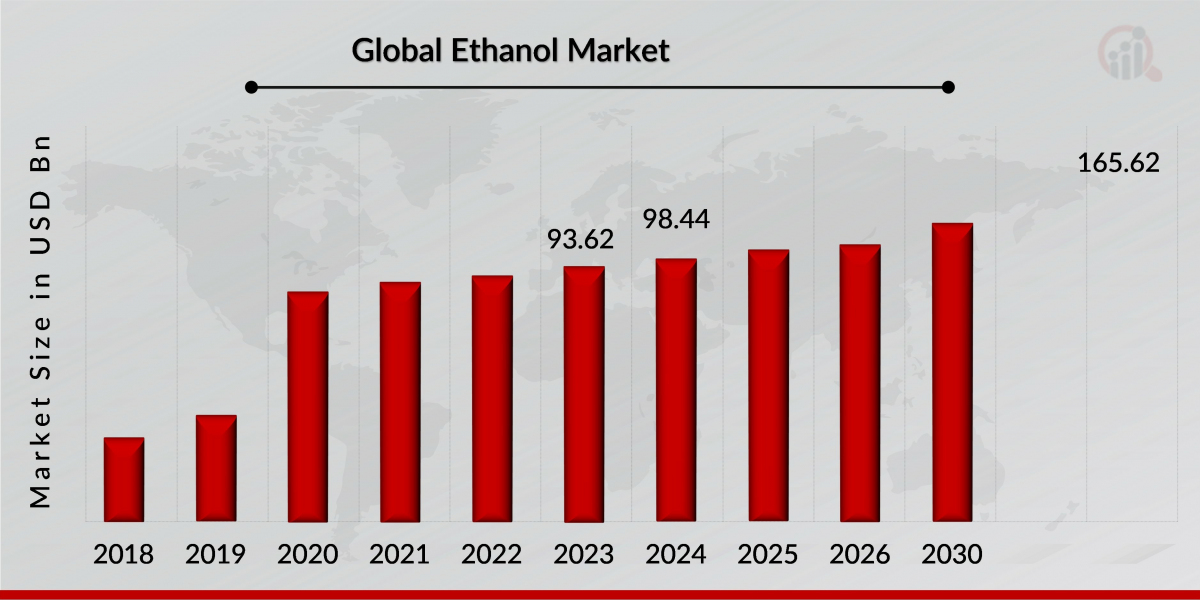The ethanol market has grown into one of the most dynamic segments of the global energy and chemical industry, driven by the rising demand for renewable and cleaner sources of fuel. Ethanol, commonly produced through the fermentation of biomass sources such as corn, sugarcane, wheat, or other agricultural feedstocks, has become a vital component in addressing the challenges of energy security, reducing carbon emissions, and supporting rural economies. Over the years, ethanol has transitioned from being merely an industrial alcohol to a mainstream fuel additive and bio-based solution with versatile applications across sectors.
The market for ethanol is closely linked to the transportation industry as it is widely blended with gasoline to produce biofuels. Blending ethanol with gasoline helps reduce greenhouse gas emissions, improves combustion efficiency, and decreases reliance on pure fossil fuels. This has made ethanol a strategic fuel alternative, especially in regions where governments are setting strict regulations to lower carbon footprints and promote sustainability. In countries like the United States and Brazil, ethanol has already established itself as a mainstream fuel due to large-scale blending mandates. Other regions such as Europe and parts of Asia are also gradually increasing ethanol adoption in their fuel mix to align with environmental goals.
A significant factor shaping the ethanol market is the abundance and diversity of raw materials available for production. Sugarcane and corn are the most dominant feedstocks, with Brazil leading in sugarcane-based ethanol and the United States focusing on corn-based production. This availability of feedstocks ensures that ethanol production can be tailored to local agricultural strengths, which in turn stimulates rural economies and provides farmers with additional revenue streams. However, this dependency on agricultural inputs also introduces volatility to the ethanol market. Fluctuations in crop yields due to weather conditions, climate change, and food security debates often influence production costs and availability, making the ethanol industry sensitive to agricultural cycles.
The market has also expanded beyond fuel applications. Ethanol is widely used in the production of beverages, pharmaceuticals, cosmetics, and industrial chemicals. Its role as a disinfectant and solvent has gained greater visibility, especially during the global health crises where demand for sanitizers and cleaning products surged significantly. This diversification of usage provides stability to the ethanol market as it is not entirely dependent on fuel demand. The beverage and industrial segments continue to offer steady growth opportunities alongside the energy sector.
Technological advancements have played an essential role in enhancing the efficiency and sustainability of ethanol production. The development of second-generation and cellulosic ethanol, which uses non-food biomass such as crop residues, wood, and waste, is considered a breakthrough for the industry. This not only reduces the food versus fuel debate but also allows for greater utilization of agricultural waste, thereby improving the overall sustainability of the ethanol value chain. Although commercial-scale production of cellulosic ethanol is still evolving and faces challenges in terms of cost-effectiveness, it represents the future potential of the market.
Government policies and international collaborations significantly influence the trajectory of the ethanol market. Subsidies, tax incentives, and blending mandates have provided the necessary push for widespread adoption. Many countries are setting clear biofuel targets for the coming decades to transition toward greener energy sources, which directly boosts ethanol consumption. At the same time, trade policies and tariffs affect the global flow of ethanol, with major producing nations exporting large volumes to regions with limited domestic production capacity. This interconnectedness highlights the global scale of the ethanol market, where production, consumption, and trade work in synergy.
Another dimension of the ethanol market is its role in achieving energy independence. For nations heavily reliant on crude oil imports, ethanol provides an opportunity to reduce dependence on external suppliers by utilizing domestically grown crops to produce energy. This energy diversification not only strengthens national energy security but also creates jobs across the agricultural and industrial sectors. In addition, the environmental benefits of ethanol, such as lower carbon emissions and reduced pollutants, align with the global agenda of combating climate change and promoting cleaner air quality.
However, the ethanol market is not without its challenges. Price volatility in agricultural commodities, competition with electric vehicles as an alternative sustainable mobility solution, and the debate around land use are pressing issues. While ethanol reduces emissions compared to traditional gasoline, its production still requires significant amounts of water, land, and energy. Balancing the need for fuel production with food supply and environmental preservation is a constant consideration for policymakers and industry stakeholders. Moreover, the rise of electric mobility presents a new competitive landscape where ethanol must continue to innovate and demonstrate its relevance in the broader energy transition.
Despite these challenges, the long-term outlook for the ethanol market remains positive. Growing environmental awareness, supportive regulatory frameworks, and continuous innovation are expected to sustain demand. Emerging economies in Asia and Africa present untapped opportunities as their energy demand grows and governments begin to explore renewable alternatives. The increasing adoption of flexible-fuel vehicles in several regions also supports ethanol consumption, providing consumers with the choice to use higher ethanol blends in their vehicles.














